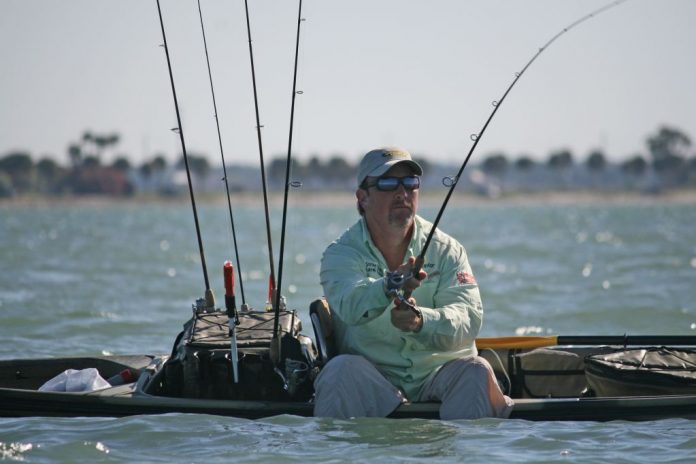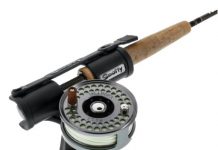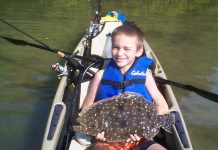November 1, 2013 j
By Neil Taylor, www.capmel.com
Certain experiences in life are enlightening in a way that you really wish you didn’t know what the situation really is. I was part of the negotiation of a first collective bargaining agreement between management and the union. That was a delight compared to dealing with the state of Florida on the topic of reopening snook to harvest this past September.
A crusade that surrounded that decision helped so many people to realize that keeping them does not match the objectives of what they would like to see in the future for this state treasure. The actual attempt to get the state to reverse the decision was a series of communication including multiple sit-down meetings and a barrage of emails to the Commission.
After the final meeting on September 11, the Commission did not answer my plea to have a meeting with the 60 plus pro anglers, guides and knowledgeable anglers to challenge the decision. Finally when the reply came, it was the same responses that were given at the other meetings “we based our decision on x, y and z. Talk to ya in 2015!” (The next stock assessment)
The good thing that has developed in the past few days, the regional director who guided me through this process, correctly describing the Commission process from the beginning, told me that the Chairman contacted him after my response to the Commission’s position on snook and said that they want to have “us” integrally involved in the process moving forward. Better than nothing, I took this information back to my colleagues and concerned contacts that have been following this case faithfully. Frustration something that had settled in much earlier, several people were extremely upset, others not particularly surprised but obviously concerned- the contact I had with the people who I consider the most knowledgeable about the process and snook was interesting. And encouraging.
The biggest nervousness that exists with everyone I know “what if there is another freeze?” So, if the science that says we are 80% recovered is anywhere near correct, in order for that to be the case a huge percentage of those fish are 20 inches or less. The pressure on the fish because of the opening is having an impact but not as large as another freeze would at this time. Another freeze let me put it to you this way: If it happens, the amount of female fish we will have will be an even worse crisis than we have right now. It is a critical time for the species even without another harsh winter event.
Female snook. Therein lays the crux of the issue. The biology of snook and the layout of what we have for a total population on the Florida Gulf coast. The current legal “slot” size for harvest is probably the biggest issue if you poll the experts. Why would we want to harvest any females now or even moving forward? It is a solution to this issue if the powers that be use the next closed period to move another direction: Change the regulations on what fish can be kept.
The current rules are intentionally set up where a mix of the fish being kept are female and male. There is great support in the community for an immediate change to the slot where female fish are not being harvested any longer. The long-term implications of a change like this: With the big population of juvenile snook, preservation of the now “upper slot” fish as female breeders gives some relief at a time when unfortunately we have too many fish that are in the current slot and may be permanently removed from the ecosystem.
Win, win: Snook will be harvested but a very small percentage female, restoring a great fishery for large snook on the Gulf Coast of Florida.
They represent you. It is your right to speak up for what you want. What would you propose? It may differ from me or another guide. The current slot is 28 to 33-inches on the Gulf coast of Florida (28 to 32 on the Atlantic side) one fish per day for an angler. If 30 to 33 inch fish are removed from the “slot”, it also removes a lot of harvest of female fish. Drop the lower end of the slot to 26-inches and top it out at 29: People will have a better chance of getting their snook for dinner and we all have a better chance of catching big snook again in our lifetimes!
Email the Commission: http://myfwc.com/contact/fwc-staff/senior-staff/contact-commissioners/
Snook biology facts: from myfwc.com
Snook are protandric hermaphrodites and change sex from male to female: some males develop into females when between 1 and 7 years of age. Females smaller than about 500 mm fork length are uncommon….
Scientists do know that the largest and oldest fish are most likely to be females and that this sex reversal is brought about by a change in the size of individuals within a group of snook. In other words, a group that loses its largest fish has lost females.
Snook can tolerate a wide range of salinity and may be found in fresh water. However, they are extremely sensitive to temperature and a strong, fast moving cold front through an area containing snook may claim many lives due to the rapid drop in water temperature.
Their range of movement increases as they grow, but they usually remain in protected areas until they reach sexual maturity, which takes 2–3 years or males and 3–4 years for females. Females live longer than males and are almost always larger than males of the same age.
Do not hold large fish vertically by the lower jaw. In a study, 50 of 50 barramundi (a related species) died after being held this way.
Other correspondence omitted (mine to the Commission) here is the response I finally got from Mr. Corbett
Dear Captain Neil Taylor:
I want to thank you for the time and effort you and your peers have dedicated to preserving the Gulf coast snook fishery. I appreciate the time you have taken to get the word out about our Wildlife Alert Hotline, which helps our law enforcement officers catch violators. I also appreciate the encouragement you have given to anglers on practicing ethical angling and catch and release of snook. The Florida Fish and Wildlife Conservation Commission (Commission) shares your desire to see an abundant snook population and appreciates stakeholders like you, who passionately devote their time and energy to the conservation of Florida’s natural resources. However, I am disappointed at the suggestion that we have been unresponsive to your efforts and concerns. Our staff strives to be responsive to all stakeholder concerns and I understand staff has spoken with you personally about Gulf coast snook and taken the time to meet with you numerous times to explain why my fellow Commissioners and I believe the Gulf snook stock can once again sustain the low levels of harvest permitted under the current management measures.
At the June 12, 2013 Commission meeting, my fellow Commissioners and I heard a detailed staff presentation followed by public input on the current status of the Gulf coast snook stock. After careful consideration and discussion, we decided to allow the snook fishery to open for limited harvest which began September 1, 2013. The Commission based this decision on the scientific analyses from the 2012 snook status update, combined with previously developed long-term snook management goals created in collaboration with the people of Florida. The results of the 2012 stock assessment update, along with the information collected in association of the snook-monitoring program, suggested that the Gulf coast fishery could be reopened without compromising the long term sustainability of snook in the region. The stock assessment presented to us not only used spawning potential ratio (SPR) to assess the status of the population relative to our management goals, but also evaluated spawning stock biomass (SSB) to determine whether the SPR values from the models were an accurate reflection of the snook population. My fellow Commissioners and I are confident that the scientific research and analyses conducted by our staff are not only sound, but of top-quality.
While we recognize that the Gulf snook stock has not yet fully recovered from the impacts of the 2010 cold weather event, the considerable scientific information available for this stock indicates that the population is healthy and exceeding our management goals. The Commission is also confident that the management measures we put in place in 2007 will continue to help the stock rebuild to a high abundance level. These regulations created a very narrow slot limit and restrictive seasons, and were implemented with the intention of rebuilding the snook population within a ten year time period. I understand that the population actually grew at a much faster rate than expected under these management measures and began exceeding our management goals long before the intended rebuilding deadline. Additionally, the voluntary conservation methods of concerned anglers, such as yourself, in conjunction with these management measures lead to approximately 95% of all snook caught being released by anglers, which will further aid in rebuilding the population. Staff analyses confirmed that the biomass of the Gulf spawning stock is continuing to recover and my fellow Commissioners and I firmly believe the stock can support reopening to the limited amount of harvest that is allowed under the current regulations without having a detrimental affect on future recruitment.
I understand that you met with staff most recently on September 11, and discussed the fact that the next snook stock assessment is scheduled to be conducted in 2015. In the meantime our research staff will continue to monitor the snook population. In the unlikely event that the population does sustain a serious decline, due to fishing or environmental impacts, we will certainly consider additional regulatory action. Barring such an event, as Chairman, I am not inclined to take this issue up again until the 2015 assessment has been completed. When the stock assessment is complete, we will reevaluate snook management strategies and regulations. Stakeholder input will be important at that time and I sincerely hope that you will continue to engage with our staff as this stock assessment draws near.
The Commission and I take pride in Florida’s snook fishery and view the fishery as an incredibly important resource that contributes to Florida remaining “The Fishing Capital of the World” for future generations. Your passion and continued involvement in snook management is greatly appreciated. Please accept my personal invitation to attend the public meetings our staff is planning to host following the release of the 2015 stock assessment. I have directed staff to be sure to reach out to you at the appropriate time as we plan for those meetings. Your expertise and experience will be invaluable as we move forward with developing new strategies for managing this important fishery. Thank you again for all you do to help conserve Florida’s natural marine resources.
Sincerely,
Richard Corbett
Chairman
The decision to reopen to harvest, not the best thing for bringing back a fishery full of big snook. Maybe we can explore and achieve this alternate route and achieve the same thing.
Neil Taylor is a kayak fishing guide in the Tampa Bay area, owner of www.capmel.com, outdoor writer, speaker, author and radio show host. He can be reached at 727-692-6345, livelybaits@aol.com and www.strikethreekayakfishing.com
- The Neil Blog… - July 26, 2023
- The Catfish - July 26, 2023
- update - July 22, 2023













